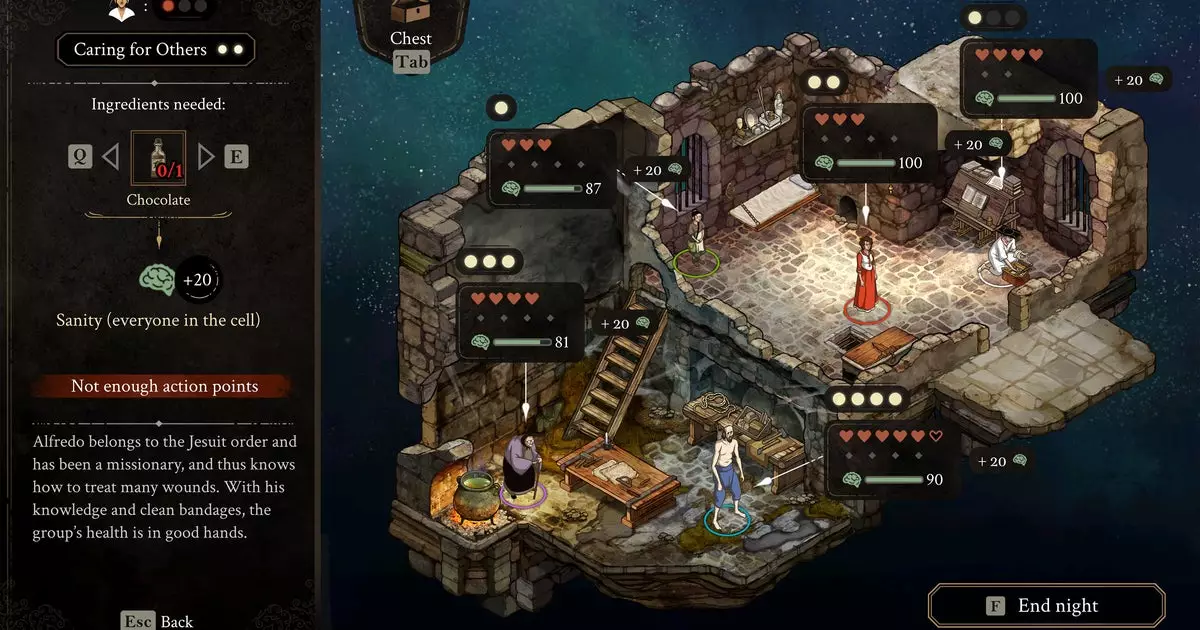Today marks the exciting release of The Game Kitchen’s latest title, The Stone of Madness—an isometric tactical stealth game that invites players into the foreboding corridors of an 18th-century monastery. This description may hint at an intricate gameplay system, but it falls short of conveying the eerie atmosphere and psychological depth awaiting players. Far from simply navigating a maze filled with guards and supernatural entities, the game intricately weaves the concept of sanity into its core mechanics. The characters find themselves grappling not only with foes but additionally with their mental fortitude, explored through the lens of unique personal struggles and phobias that evolve based on the challenges they face.
Unlike traditional stealth games, where players mainly focus on physical capabilities, The Stone of Madness brings a profound psychological twist to its character development. Each character is equipped with a sanity bar, which functions as both a gameplay and narrative tool. Players are tasked with managing not just their skills but also each character’s mental stability, leading to a multifaceted approach to strategy. This dynamic adds complexity to gameplay, where success may hinge as much on understanding your characters’ psyches as it does on employing tactical maneuvers.
Lewis Gordon’s review in Eurogamer successfully conveys the game’s allure, despite its reported issues with plotting and controls. The Game Kitchen, already known for their spine-chilling dive into religious horror with Blasphemous, admirably extends this motif into The Stone of Madness. This titillating combination of tactical gameplay and psychological exploration appeals to those who revel in narratives that probe the human condition amid supernatural settings.
A particularly fascinating aspect of the game is its deliberate engagement with the concept of “monastic time,” a theme explored by philosopher Michel Foucault. In his work, Discipline and Punish, Foucault argues that the regimented lifestyles and timekeeping of monastic communities significantly influenced contemporary work patterns—evidence that time is a societal construct with historical roots. The Stone of Madness underscores this notion, incorporating an elaborate day-night cycle that requires players to adapt strategically based on time, akin to the rituals of monastic life.
The game takes cues from The Abbey of Crime, a seminal Spanish title influenced by Umberto Eco’s The Name of the Rose. Through this connection, the exploration of monastic time in a video game context paves the way for intriguing discussions about timekeeping within different gaming genres. How would traditional action or adventure games transform if they required players to engage with time as a character trait or obstacle?
As players prepare to embark on their journey in The Stone of Madness, the questions it raises about both racing against time and grappling with the complexities of mental health stand poised to enrich gaming discourse. The confluence of strategic stealth mechanics and psychological elements creates a promising framework for innovative gameplay. As I delve further into this captivating universe, I anticipate discovering not just the game’s secrets but perhaps broader insights that connect various forms of gaming with the intricate tapestry of human experience. The Stone of Madness is not merely a game; it’s an exploration into the labyrinth of the mind, and I look forward to what lies ahead.

